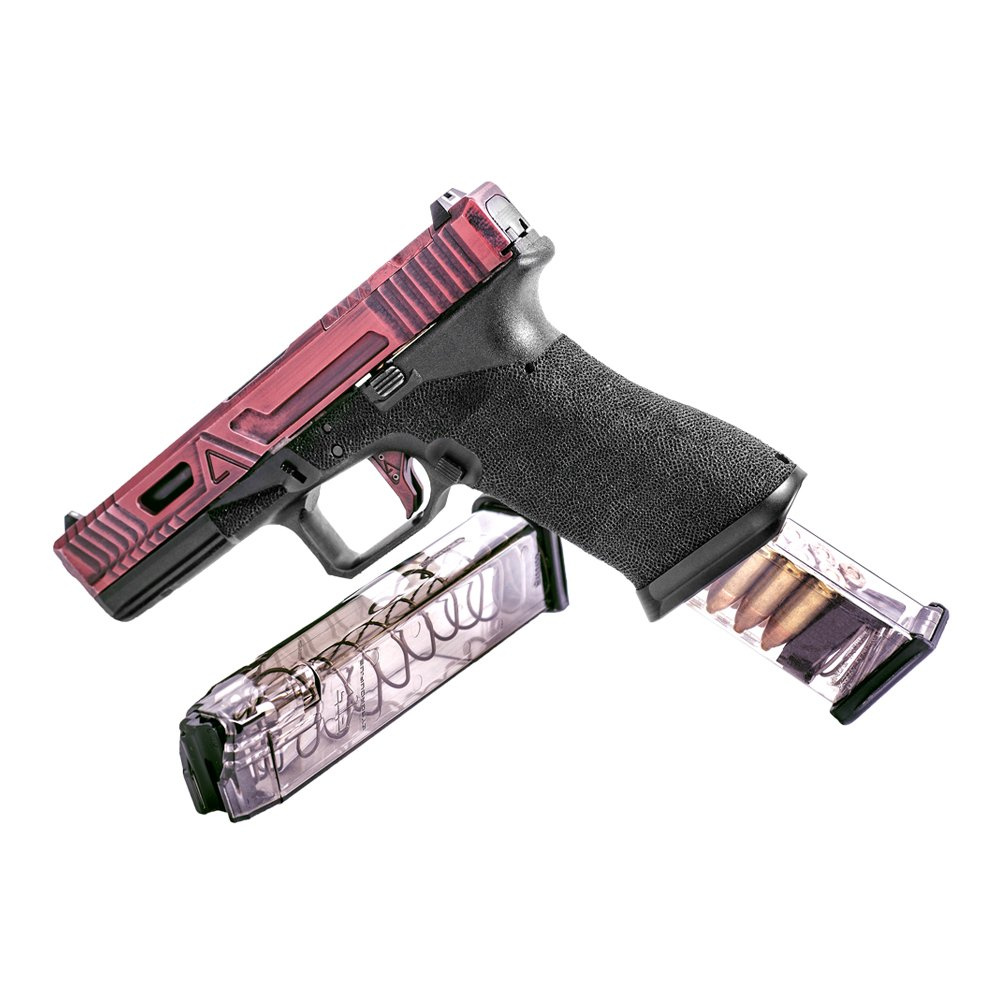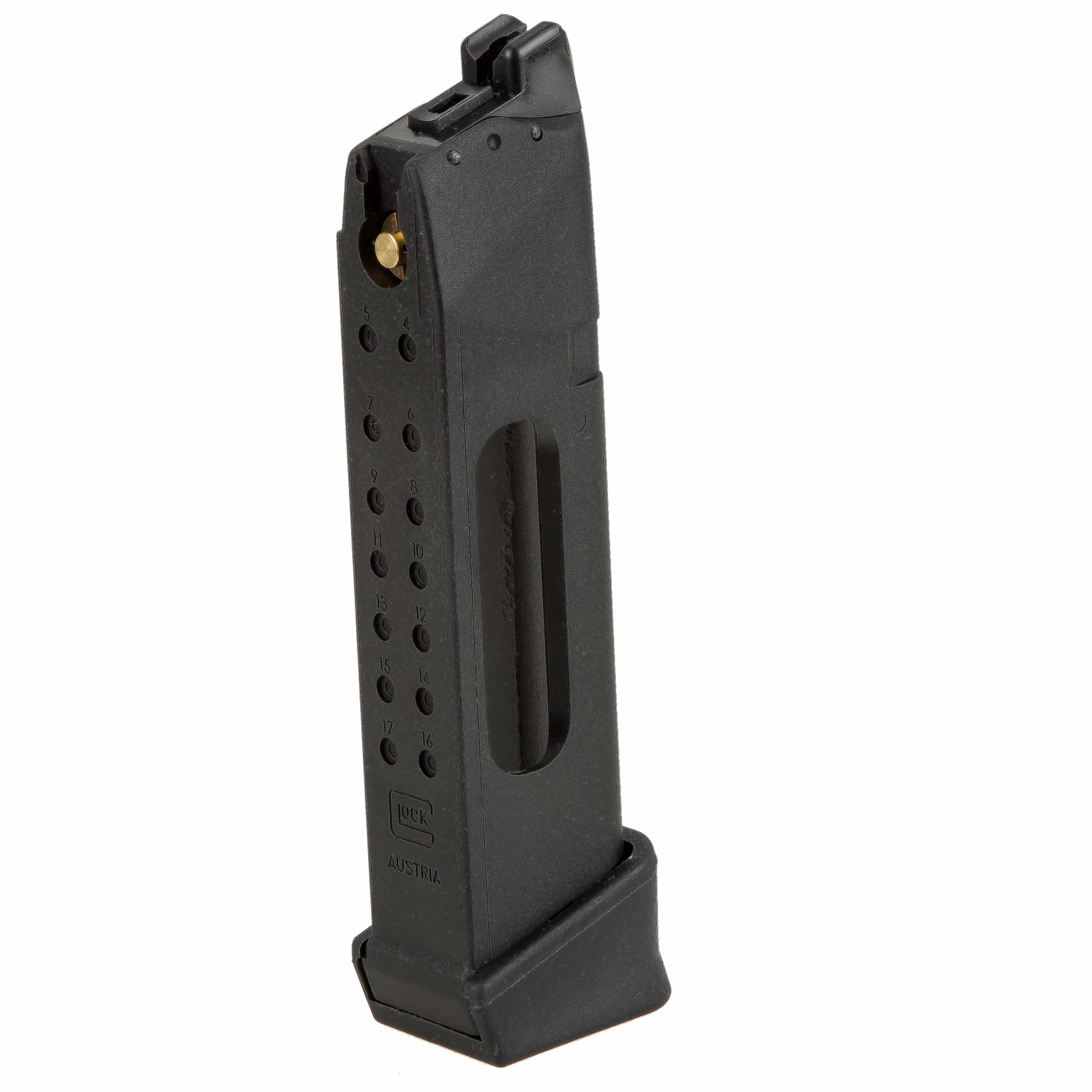

The gun was also hideously ugly a block of a pistol, ugly matte gray slide squatting blandly upon a frame and grip that felt like a plastic toy. The finish on the slide, what Glock called Tenifer, a form of nitrocarburizing, was at the time seen as borderline sorcerous in its durability and corrosion resistance. The Glock’s boring reliability, simple, consistent trigger, excellent capacity and light weight were instant hits. and elsewhere that would soon turn into a sweeping wave of reviews, tests, trials and subsequent adoptions among many agencies and hundreds of thousands of civilians through the late 1980’s and 1990’s. That adoption generated interest in the U.S. Combining the attributes and design cues of other great handguns, Glock produced a pistol that sailed through the trials and was adopted by Austrian police and military units as the P80.

Note, prior to this Gaston Glock and company were not makers of firearms this would be their first pistol design ever. Glock whipped together their eponymous pistol in a few months, after gathering a brain trust consisting of Europe’s best and brightest minds and experts in the field of pistolcraft, distilling their experience into design objectives describing what the ideal combat handgun would look like.Īn additional design mandate was incorporation of extensive polymer construction and modernized manufacturing methodology to ensure that costs were kept as low as possible.Īll of these characteristics together in one handgun was nothing short of mind-boggling in its day. The Austrian Armed Forces testing protocol was stout, for its day and included stringent drop and shock tests to ensure the new pistol would not fire when dropped onto an unyielding surface, a 15,000 round endurance test and then a proof load firing and other abusive testing. That all changed in 1982, when in solicitation of an Austrian Armed Forces open request for a new, highly modern sidearm, Glock G.m.b.H., led by founder and engineer Gaston Glock, submitted the Glock 17. Keep in mind the attitudes of consumers around this time in the late 1970s and early 1980s plastic made it possible, but it wasn’t for making service guns, except as a novelty or for things like grip panels. It did not achieve much military or commercial success, and is today a footnote and cult collector’s item.

#Glock 17 vs 34 manual
The VP70 did have it share of quirks though, among them a very heavy trigger pull, oddly placed cross-bolt manual safety and typical of the time European heel magazine release. The concept we love about the Glock and other modern polymer pistols was on display with the VP70: striker-fired action, high capacity of 18 rounds in 9mm, light weight and a consistent trigger. That honor goes to the H&K VP70 series, which preceded the Glock to market by about 11 years. The Glock 17, while the first polymer handgun to achieve widespread success and adoption, was not the first polymer-framed handgun. With so much competition and comparison between the two, which has the edge? Which is most deserving of your dollars? I trust this article will help you decide. Today, the two most sought after polymer striker guns among discerning shooters are either Glock or the M&P.Įither is a solid, good-shooting gun out of the box, or will serve as the basis of a customized blaster that will be the envy of your friends and the nemesis of your bank account. That all changed around 2005: Smith & Wesson, long a force to be reckoned with in American handguns turned out the M&P, simultaneously resurrecting that legendary livery.Īfter a few minor teething problems, handing the unstoppable Glock its first real domestic competition in the eyes of law enforcement. You don’t attain such a status, a status of complete cultural saturation and being the overwhelmingly popular choice of law enforcement without turning out a terrific pistol.Ī pistol so good, so boringly reliable, easy to service and easy to shoot with a price so affordable that to a great many pistoleros any other polymer pistol was only ever an “also-ran.” So ubiquitous its name is slang for “handgun.” I am speaking of course about the legendary, ubiquitous Glock. For the longest time, there was only one dominant striker-fired polymer pistol.


 0 kommentar(er)
0 kommentar(er)
